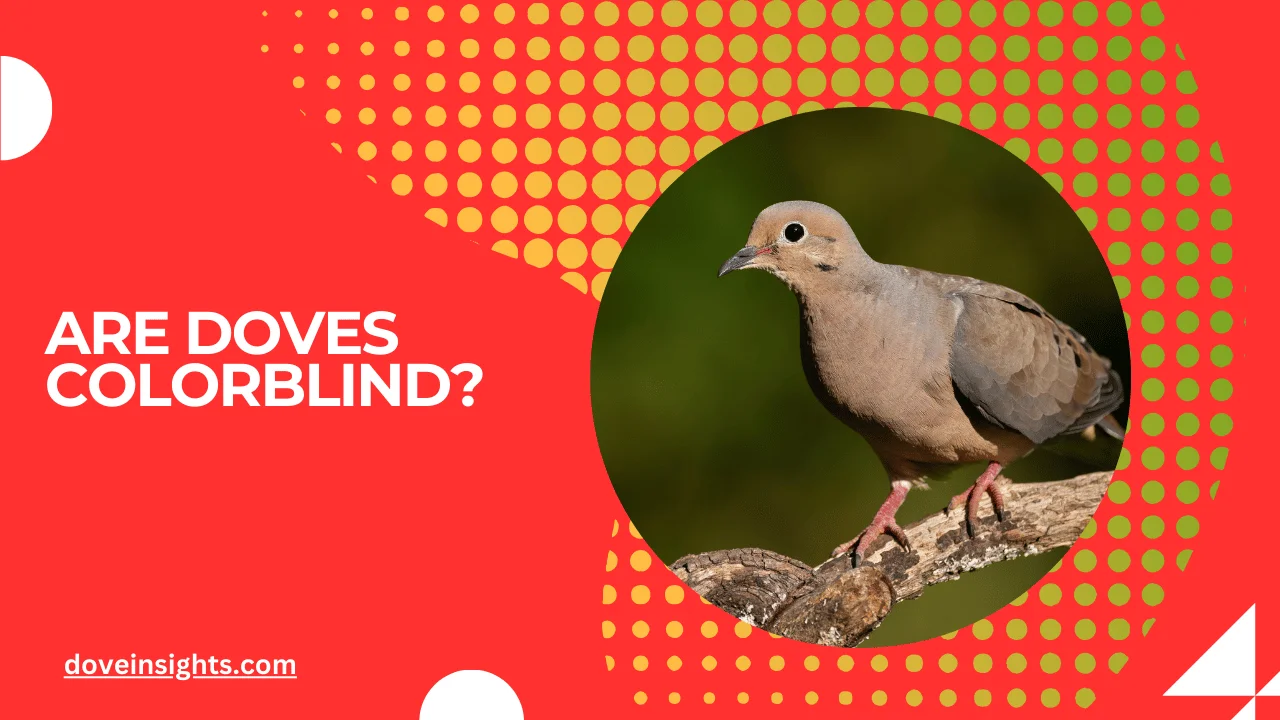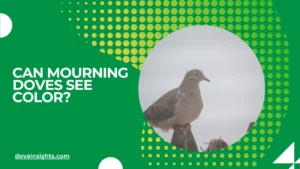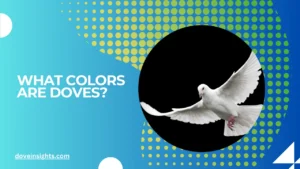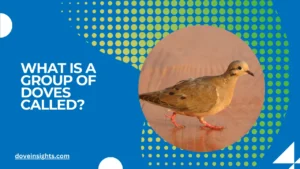When you observe a dove gliding through the sky or cooing from a tree branch, it’s easy to be entranced by its serene and peaceful nature.
But have you ever wondered what the world looks like through the eyes of these elegant creatures? Specifically, do doves see colors the same way we do? The question of whether doves are colorblind has intrigued many people, from casual birdwatchers to seasoned scientists.
Understanding how these birds perceive their environment can reveal surprising insights into their behavior and survival strategies.
It’s easy to assume that doves, like other animals, see the world in the same way humans do. However, recent research suggests that the reality might be quite different.
While humans rely on a combination of three types of color receptors to perceive a wide spectrum of colors, other creatures might have a more limited or completely different visual experience.
For doves, it is essential to explore how their visual system works, and what this means for their interactions with the environment, mating rituals, and even their ability to navigate vast distances.
This article delves into the complex and fascinating world of dove vision, investigating the question of whether doves are colorblind and, if so, how this impacts their daily lives.
From understanding their ocular anatomy to comparing their sight with that of other animals, we will uncover the mysteries of dove vision and offer a comprehensive look at how color perception shapes their world.
Whether you’re a bird enthusiast or simply curious about how nature works, keep reading to discover the surprising truths about doves and their visual capabilities.
Contents
- 1 The Basics of Dove Vision
- 2 Color Perception in Doves vs. Humans
- 3 How Dove Vision Impacts Their Behavior
- 4 The Science of Bird Color Vision
- 5 Debunking Common Myths About Doves and Colorblindness
- 6 Conclusion
- 7 FAQ’s
- 7.0.1 Are doves truly colorblind?
- 7.0.2 How do doves see the world differently from humans?
- 7.0.3 Can doves see colors like red and blue?
- 7.0.4 Do doves use their color vision for mating?
- 7.0.5 How does a dove’s vision help it survive in the wild?
- 7.0.6 Do other birds have the same color vision as doves?
The Basics of Dove Vision
To understand whether doves are colorblind, it’s essential to first explore the basics of their vision. Like many birds, doves have a highly specialized visual system, much more advanced than humans in some respects.
They possess four types of color receptors (cones) in their eyes, compared to just three in humans. This ability allows them to see a broader range of colors, including ultraviolet (UV) light, which is invisible to us. In fact, doves can see UV patterns on flowers and potential mates that would remain hidden from human eyes.
This expanded color spectrum plays a crucial role in how doves navigate their environment and interact with one another.
While the range of colors doves can see is much broader than ours, the question remains: do they experience color the same way we do?
Are they truly “colorblind,” or do they perceive a different spectrum of colors that we can’t comprehend? The answer lies in understanding the specific characteristics of their visual receptors and how their brain processes these signals.
Color Perception in Doves vs. Humans
Humans perceive the world through three types of cones sensitive to red, green, and blue wavelengths.
However, doves, like many other birds, have an additional fourth cone that is sensitive to ultraviolet light, a wavelength shorter than visible blue light. This means doves can distinguish colors and patterns that we cannot see.
For example, many birds have UV-reflecting feathers that look ordinary to us but are actually quite striking to their avian counterparts.
Although doves are not colorblind in the traditional sense of the word, their vision is fundamentally different from ours. Their perception of colors may not align with human standards.
In fact, doves may be able to perceive a more vibrant and complex color palette than humans, allowing them to detect subtle hues and patterns that play a significant role in their social and mating behaviors.
This section will examine the scientific basis of these differences, shedding light on how colorblindness applies (or doesn’t apply) to doves.
How Dove Vision Impacts Their Behavior
Understanding dove vision isn’t just about the science of their eyes—it’s about how they use their vision to survive and thrive. Doves rely heavily on their ability to discern subtle colors and patterns in their environment.
For instance, mating displays are often dependent on the visual appeal of feathers, which might reflect UV light in a way that attracts potential mates.
Doves may also use color cues to identify safe nesting spots or find food, as their sharp vision helps them detect food items and potential predators.
Furthermore, their ability to navigate through the sky, often covering vast distances during migration, relies heavily on visual cues. Doves likely use both visual memory and environmental markers, many of which are based on colors and patterns in the landscape.
By examining how color perception impacts behavior, we can better understand how these birds interact with their surroundings and each other.
The Science of Bird Color Vision
Doves are not unique in their advanced color vision. Many bird species, including parrots, pigeons, and even some raptors, share similar visual characteristics.
Research in avian vision has revealed that birds’ eyes are far more complex than human eyes in some respects. While we see the world in a relatively limited spectrum of colors, birds like doves have the ability to process more complex color signals.
The scientific community has conducted numerous studies on bird vision, particularly focusing on how the extra cone in their eyes affects their ability to see ultraviolet light.
This section will explore how the anatomical structure of a dove’s eye allows it to see these additional colors, what the implications are for their daily life, and how scientists measure and test these visual abilities.
Debunking Common Myths About Doves and Colorblindness
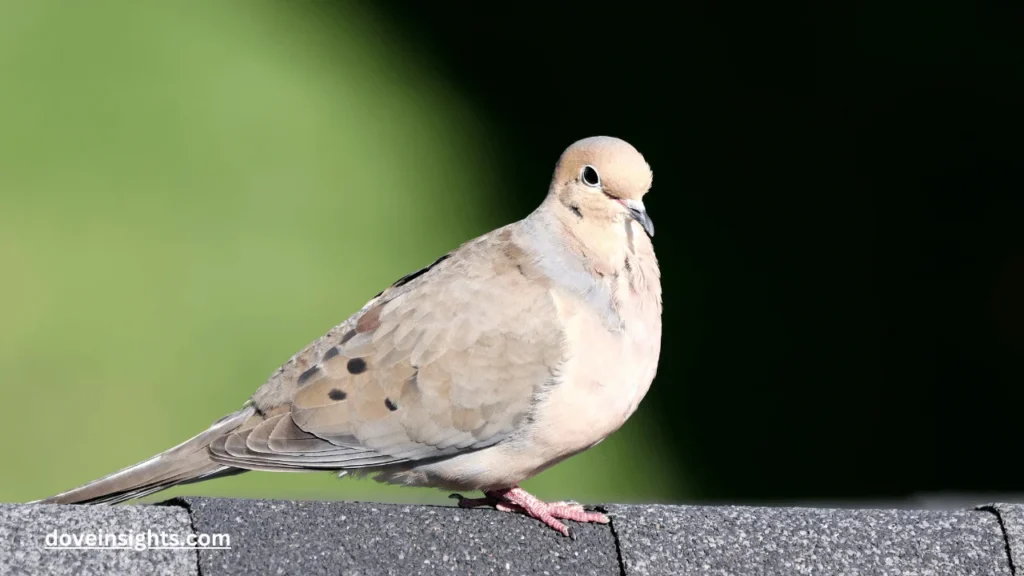
There are many myths surrounding the idea of doves and their perception of color. Some people believe that doves are completely colorblind or that they only see in shades of gray, but this is far from accurate. The truth is that while doves may have a different color perception from humans, they are far from being colorblind.
In this section, we will address common misconceptions about dove vision, exploring why they might be thought of as colorblind and providing clarity based on scientific findings.
By understanding the true nature of dove vision, we can dispel myths and appreciate the remarkable abilities these birds have to perceive and interact with the world around them.
Conclusion
In conclusion, doves are not colorblind in the traditional sense. Their vision is both remarkable and unique, allowing them to perceive a wider range of colors than humans can even imagine.
While they do not see colors the same way we do, they have evolved to utilize their visual abilities for survival, mating, and navigation in a way that enhances their existence in the natural world.
Whether you’re a birdwatcher, a curious nature lover, or simply fascinated by how animals perceive their surroundings, understanding dove vision opens up a new perspective on these graceful creatures.
Far from being colorblind, doves possess a sophisticated visual system that aids them in many aspects of their lives. As we continue to explore and understand the world of animals, we can gain a deeper appreciation for the diversity of experiences that exist in nature.
FAQ’s
Are doves truly colorblind?
No, doves are not colorblind. Unlike humans, who have three types of color receptors, doves possess four types of cones in their eyes, allowing them to see a broader range of colors, including ultraviolet light. While they may not perceive colors in the same way humans do, they are far from being colorblind.
How do doves see the world differently from humans?
Doves have an additional fourth cone that enables them to see ultraviolet (UV) light, a color spectrum invisible to humans. This means doves can perceive colors and patterns that humans cannot see. For example, many of the UV-reflecting feathers on birds’ plumage are visible to doves but not to us, giving them a more complex and vibrant visual experience.
Can doves see colors like red and blue?
Yes, doves can see a broad spectrum of colors, including red and blue. However, because they also see ultraviolet light, their color vision includes wavelengths that humans cannot perceive. This allows doves to detect subtle color patterns on flowers, potential mates, and other objects that are crucial for their behavior and survival.
Do doves use their color vision for mating?
Absolutely! Color plays a significant role in dove mating behaviors. Many species of doves have distinct feathers that reflect ultraviolet light, which makes them appear more vibrant to potential mates. This allows doves to attract partners by displaying these unique visual patterns, which can signify health, strength, and attractiveness.
How does a dove’s vision help it survive in the wild?
Doves rely on their exceptional color vision for several survival-related tasks. They use it to identify safe nesting spots, locate food, and spot predators. Their ability to detect subtle differences in colors also aids them in navigating their environment and flying long distances during migration, helping them avoid danger and thrive in their habitats.
Do other birds have the same color vision as doves?
Many other bird species, such as parrots, pigeons, and hawks, also possess similar advanced color vision. Like doves, these birds can see ultraviolet light, which enhances their ability to identify mates, find food, and navigate through various environments. However, not all birds have the exact same visual capabilities, as it varies across species.

